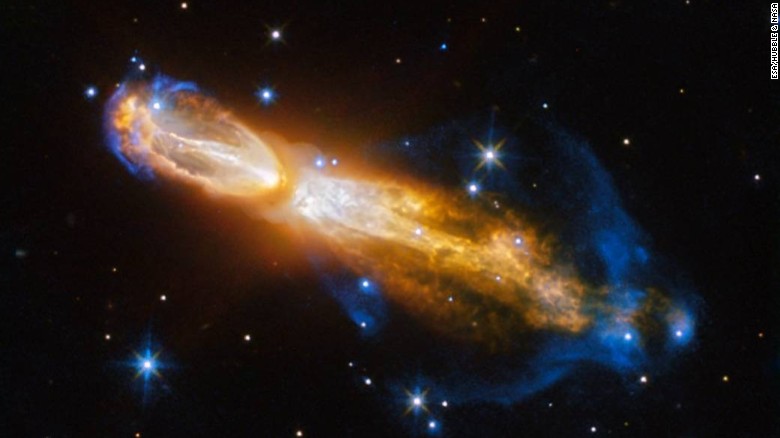
The
Calabash Nebula, also has the technical name OH 231.8+04.2. This image
captures the transformation from a red giant to a planetary nebula.
Story highlights
- The dying star is known as a red giant
- Astronomers rarely get to see this kind transition because it occurs "within the blink of an eye"
(CNN)The Hubble Telescope captured the spectacular death of a star -- an event that has rarely been seen by astronomers.
The
dying star, known as a red giant, in its final stages blows out its
outer layers, leaving clouds of gas and dust, which is called a
planetary nebula.
NASA
and the European Space Agency released the photo of the Calabash
Nebula. The gas, seen in yellow, was ejected as fast as 621,371 miles
per hour, according to the ESA.
Astronomers
rarely get to see this kind transition because it occurs "within the
blink of an eye -- in astronomical terms," the ESA said.
The
nebula is also known as the Rotten Egg Nebula, because it contains a
lot of sulfur, which smells like rotten eggs. Luckily, this is happening
about 5,000 light-years away in the constellation of Puppis, according
to the ESA.
No comments:
Post a Comment